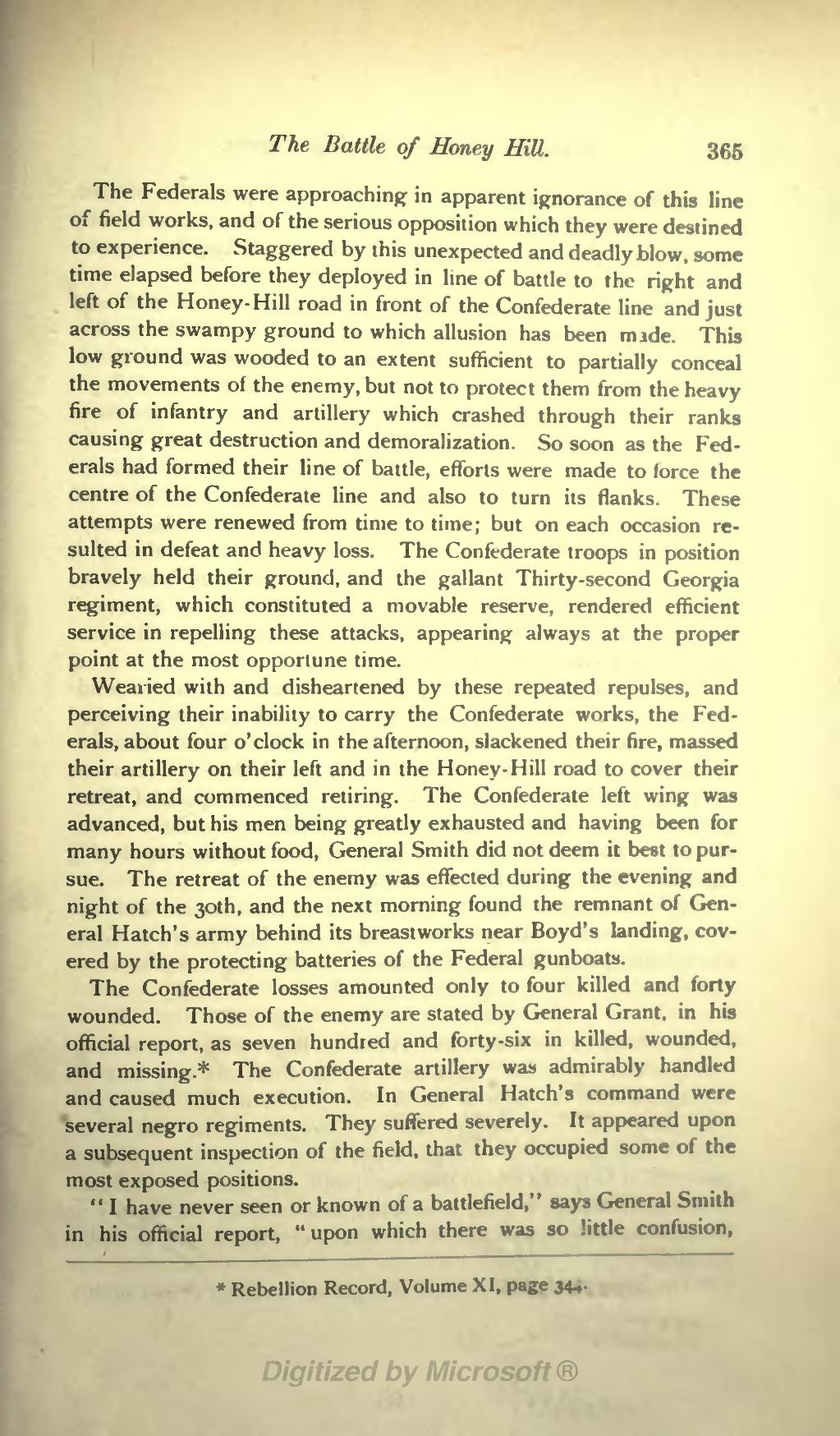The Battle of Honey Hill. :;;;,
The Federals were approaching in apparent ignorance of this line of field works, and of the serious opposition which they were destined to experience. Staggered by this unexpected and deadly blow, some time elapsed before they deployed in line of battle to the right and left of the Honey- Hill road in front of the Confederate line and just across the swampy ground to which allusion has been made. This low ground was wooded to an extent sufficient to partially conceal the movements of the enemy, but not to protect them from the heavy fire of infantry and artillery which crashed through their ranks causing great destruction and demoralization. So soon as the Fed- erals had formed their line of battle, efforts were made to force the centre of the Confederate line and also to turn its flanks. These attempts were renewed from time to time; but on each occasion re- sulted in defeat and heavy loss. The Confederate troops in position bravely held their ground, and the gallant Thirty-second Georgia regiment, which constituted a movable reserve, rendered efficient service in repelling these attacks, appearing always at the proper point at the most opportune time.
Wearied with and disheartened by these repeated repulses, and perceiving their inability to carry the Confederate works, the Fed- erals, about four o'clock in the afternoon, slackened their fire, massed their artillery on their left and in the Honey- Hill road to cover their retreat, and commenced retiring. The Confederate left wing was advanced, but his men being greatly exhausted and having been for many hours without food, General Smith did not deem it best to pur- sue. The retreat of the enemy was effected during the evening and night of the 3Oth, and the next morning found the remnant of Gen- eral Hatch's army behind its breastworks near Boyd's landing, cov- ered by the protecting batteries of the Federal gunboats.
The Confederate losses amounted only to four killed and forty wounded. Those of the enemy are stated by General Grant, in his official report, as seven hundred and forty-six in killed, wounded, and missing.* The Confederate artillery was admirably handled and caused much execution. In General Hatch's command were several negro regiments. They suffered severely. It appeared upon a subsequent inspection of the field, that they occupied some of the most exposed positions.
" I have never seen or known of a battlefield," says General Smith in his official report, "upon which there was so little confusion,
- Rebellion Record, Volume XI, page 344-
